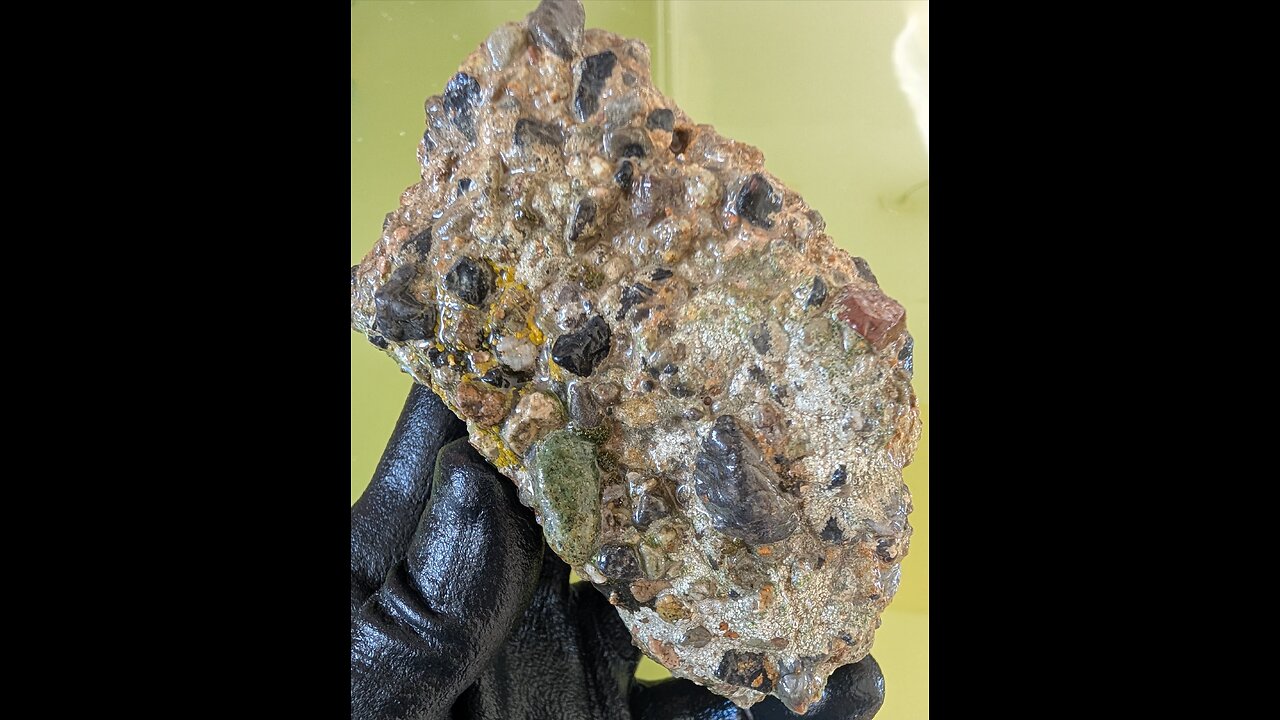Premium Only Content

Conglomerate!
Conglomerate is a clastic sedimentary rock composed mainly of rounded gravel-size clasts (pebbles, cobbles, and sometimes boulders) that are cemented together by a matrix of finer-grained sediments like sand, silt, or clay. Here are some key details about conglomerate:
Formation: Conglomerate forms in environments where there is strong water current or wave action that can transport and round the larger clasts before they are deposited. Common depositional environments include riverbeds, beaches, alluvial fans, and the bases of山 slopes where debris flows occur. Over time, these deposits are buried, compacted, and cemented.
Composition:
Clasts: These are the larger, rounded fragments which can be composed of various rock types like quartz, granite, basalt, or even other sedimentary rocks.
Matrix: The finer material that fills the spaces between the clasts, often composed of sand, silt, or clay.
Cement: Minerals like silica, calcium carbonate, or iron oxides that bind the clasts and matrix together.
Texture: Conglomerate has a coarse texture due to the presence of larger clasts. The texture can be described as poorly sorted if there is a wide range of clast sizes, or well-sorted if the clasts are more uniform in size.
Color: The color of conglomerate varies based on the composition of both the clasts and the matrix. Clasts can be of different colors depending on the source rock, and the matrix color can range from light to dark, influenced by the cementing material.
Types:
Orthoconglomerate: Where the clasts are well-rounded and the matrix is minimal or absent.
Paraconglomerate: Where the clasts are less rounded and there's a significant matrix, indicating less transport or different depositional conditions.
Uses:
Construction: Due to its durability, conglomerate can be used in construction for building stone, road base, or as an aggregate in concrete.
Decorative: Its unique appearance with varied clasts makes it suitable for decorative stone in landscaping or interior design.
Geological Studies: It provides valuable information about past environments, particularly regarding sediment transport and deposition.
Geological Significance: Conglomerate layers can tell geologists about the energy of the environment where they were deposited, the source of the clasts, and the processes involved in their formation. They can indicate ancient river systems, coastal environments, or even glacial activity.
-
 DVR
DVR
Bannons War Room
6 months agoWarRoom Live
34.1M8K -
 LIVE
LIVE
ttvglamourx
1 hour ago $0.28 earnedPLAYING WITH VIEWERS !DISCORD
93 watching -

VapinGamers
1 hour ago $0.46 earnedTools of the Trade - Of Thumbnails and Titles, What's Important? - !rumbot !music
7.4K -
![Mr & Mrs X - [DS] Trafficking Empire – How Epstein Built His Web of Wealth and Deceit:Part 1 - Ep 5](https://1a-1791.com/video/fww1/f0/s8/1/o/k/J/d/okJdz.0kob-small-Mr-and-Mrs-X-DS-Trafficking.jpg) 52:11
52:11
X22 Report
3 hours agoMr & Mrs X - [DS] Trafficking Empire – How Epstein Built His Web of Wealth and Deceit:Part 1 - Ep 5
70.1K14 -
 1:13:18
1:13:18
Wendy Bell Radio
7 hours agoPet Talk With The Pet Doc
42.4K61 -
 LIVE
LIVE
dieseldesigns
5 hours agoExploring Labs In the DARK! // Abiotic factor
16 watching -
 LIVE
LIVE
BBQPenguin_
4 hours agoDragonball Z - The Android Saga
119 watching -
 LIVE
LIVE
Total Horse Channel
5 hours ago2025 URCHA Futurity | Derby & Horse Show | Saturday
35 watching -
 LIVE
LIVE
DynastyXL
5 hours ago🔴LIVE: Fortnite The Comeback Stream Starts Here🎃
54 watching -
 1:38:57
1:38:57
njgaming23
3 hours agoCoffee and Morning vibes #rumbletakeover
9.52K